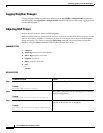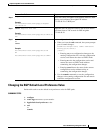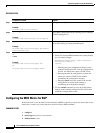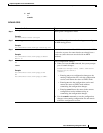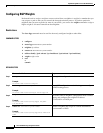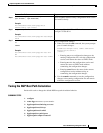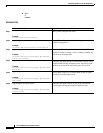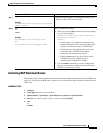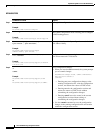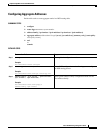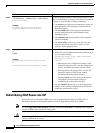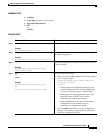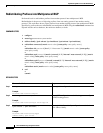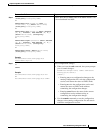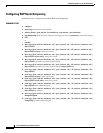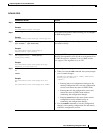
Implementing BGP on Cisco IOS XR Software
How to Implement BGP on Cisco IOS XR Software
RC-42
Cisco IOS XR Routing Configuration Guide
DETAILED STEPS
Command or Action Purpose
Step 1
configure
Example:
RP/0/RP0/CPU0:router# configure
Enters global configuration mode.
Step 2
router bgp
autonomous-system-number
Example:
RP/0/RP0/CPU0:router(config)# router bgp 120
Enters BGP configuration mode allowing you to configure
the BGP routing process.
Step 3
address-family {ipv4 unicast | ipv4 multicast |
ipv6 unicast | ipv6 multicast}
Example:
RP/0/RP0/CPU0:router(config-bgp)#
address-family ipv4 unicast
Enters global address family configuration mode for the
IPv4 address family.
Step 4
network {
ip-address /prefix-length
|
ip-address
mask
} backdoor
Example:
RP/0/RP0/CPU0:router(config-bgp-af)# network
172.20.0.0/16
Configures the local router to originate and advertise the
IPv4 unicast network 172.20.0.0/16.
Step 5
end
or
commit
Example:
RP/0/RP0/CPU0:router(config-bgp-af)# end
or
RP/0/RP0/CPU0:router(config-bgp-af)# commit
Saves configuration changes.
• When you issue the end command, the system prompts
you to commit changes:
Uncommitted changes found, commit them before
exiting(yes/no/cancel)?
[cancel]:
–
Entering yes saves configuration changes to the
running configuration file, exits the configuration
session, and returns the router to EXEC mode.
–
Entering no exits the configuration session and
returns the router to EXEC mode without
committing the configuration changes.
–
Entering cancel leaves the router in the current
configuration session without exiting or
committing the configuration changes.
• Use the commit command to save the configuration
changes to the running configuration file and remain
within the configuration session.



